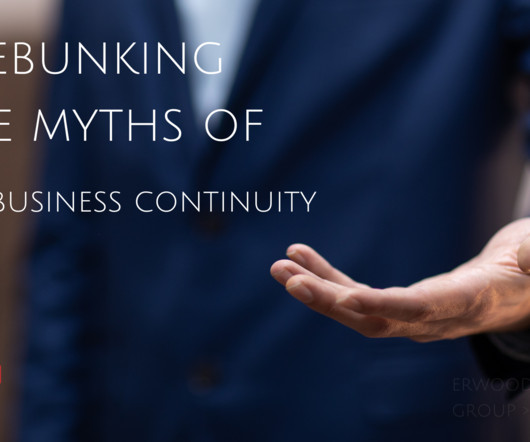Why BCM and ERM Should Be BFFs
MHA Consulting
MARCH 30, 2023
Sometimes questions arise about the relationship between the business continuity management (BCM) team and the enterprise risk management (ERM) department. The fact is, both units—as well as the organization—benefit when BCM and ERM are BFFs (or best friends forever, as the kids say). BCM is more tactical and operations-focused.
















Let's personalize your content